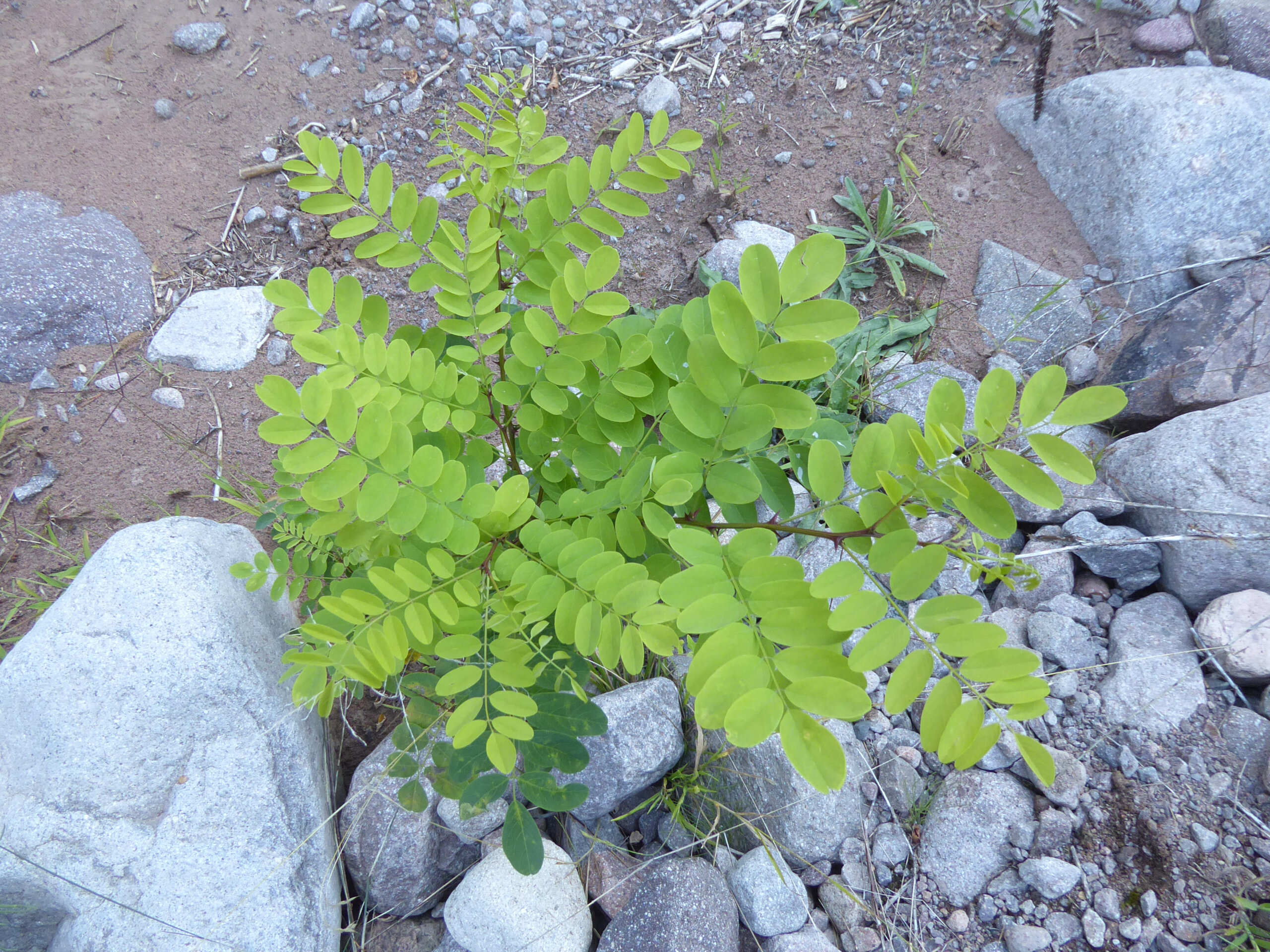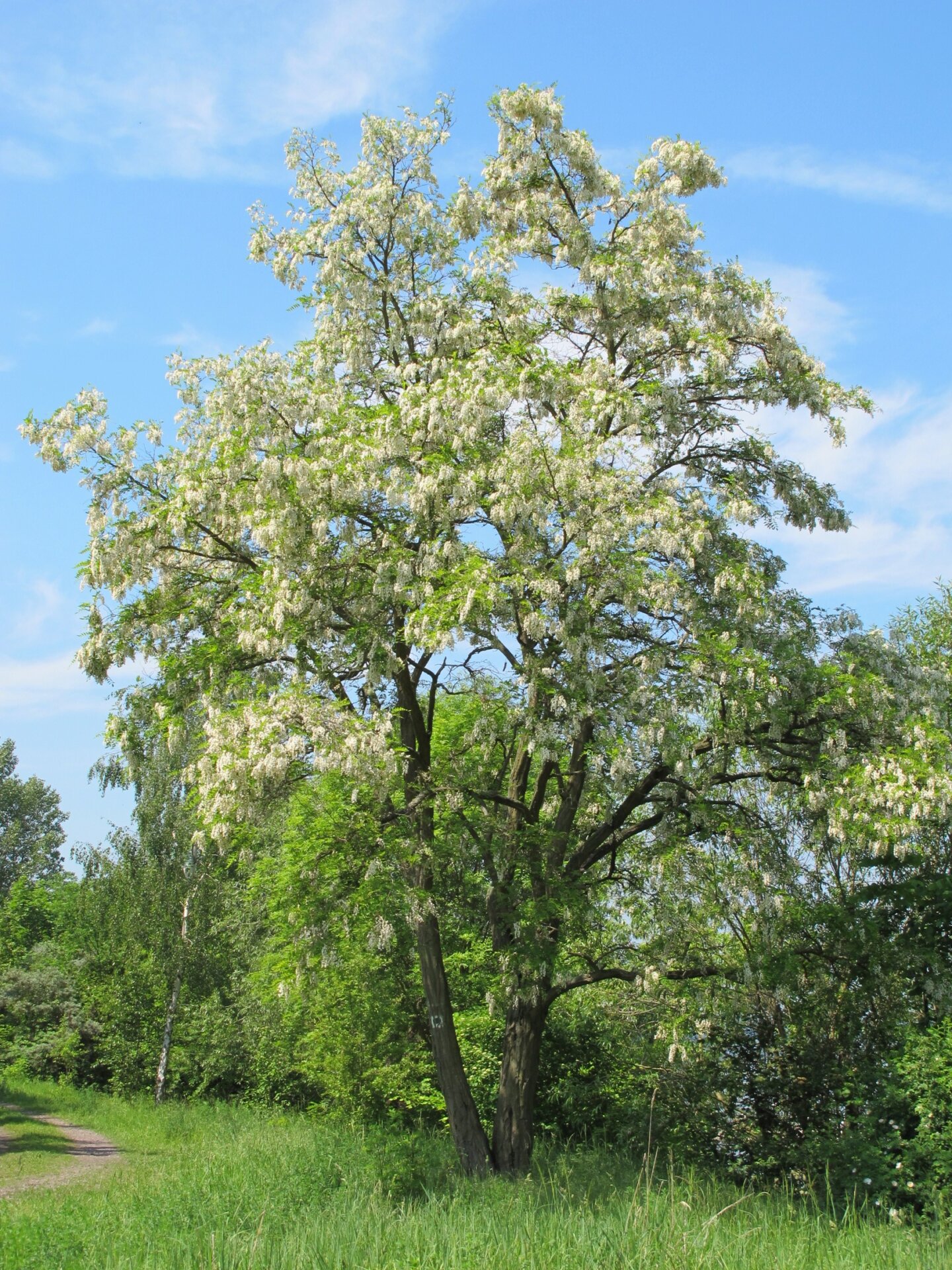Robinia pseudoacacia
Description
- A fast growing, medium sized deciduous tree in the pea family. Able to reach heights of 30m, but more commonly found between 10-20m.
- Grows compound leaves (made up of smaller leaflets) with an odd number (7-19) of leaflets that are 2.5-5cm long and bluish-green in colour.
- White flowers with yellow centers that are showy and fragrant. Flowering is typically in early summer. Flowers form loose drooping clumps (racemes) which are 10-20cm long.
- Seeds form in pea-like pods 5-10cm long containing 4-8 seeds.
- Young trees often are spiney.
- Bark is deeply furrowed on mature trees with a reddish-black and gray colouring.
Introduction and spread
- Black locust is native to Southern-Eastern United States – the Appalachian Mountains from central Pennsylvania to northern Alabama and Georgia, as well as the Ozark Mountains. It is now naturalized across most of North America, Europe, Asia and Oceana.
- It has been cultivated for use in horticulture, forestry and reclamation/restoration.
- It can spread through seeds (it is a prolific seed producer, although few are able to germinate) and by vegetative root suckers. If the main stem is damage it will produce numerous suckers from both roots and other parts of the main tree making it difficult to remove effectively.
Consequences of invasion
- As it can spread rapidly through its root suckers and has such rapid annual growth (up to 2ft a year!) it can quickly crowd out native vegetation.
- It is highly shade intolerant so is often found on disturbed sights and at forest edges where it will form dense stands, shading out lower growing plants and young saplings of other pioneer species.
- Because it is a member of the pea family, it adds nitrogen to the soil from the air, altering the soil chemistry and composition where it grows.
Status in the CKISS region
- Black locust is currently classified as Insufficient Information in the CKISS region on the CKISS Annual Priority list. This means that there is insufficient information for English holly about its distribution, impacts, potential for spread and/or feasibility of control.
Integrated pest management options
- Become PlantWise and learn about Grow Me Instead. Select alternative, non-invasive plants.
Prevention
- Trees and saplings can be cut and monitored over several years to ensure fresh saplings won’t pop up following initial removal.
Mechanical control
- Herbicide application to cut stems can be used in coordination with a mechanical control management program.
Chemical control
- Although large quantities of the leaves can be toxic to livestock, they will graze on small amounts. Grazing livestock could be used in coordination with mechanical control to prevent sapling regrowth.
Cultural control
Additional resources






